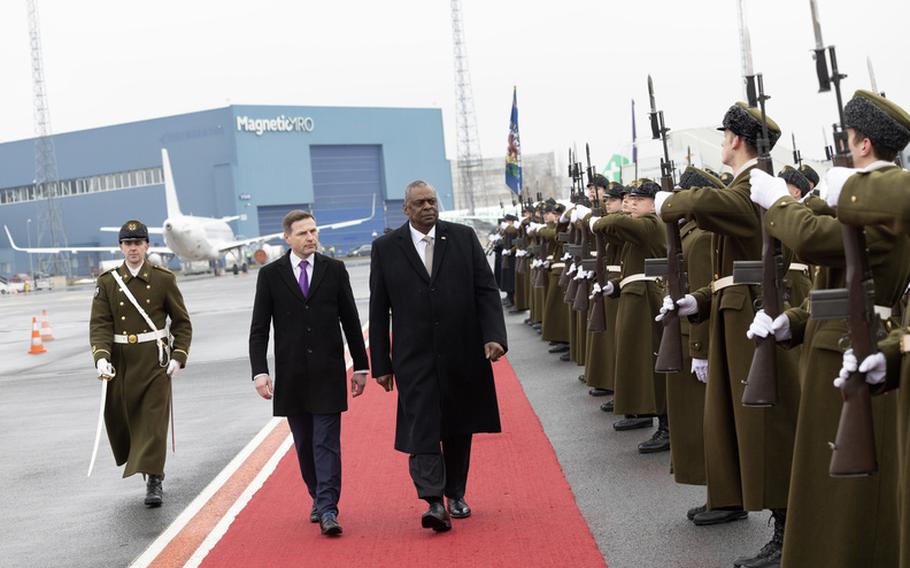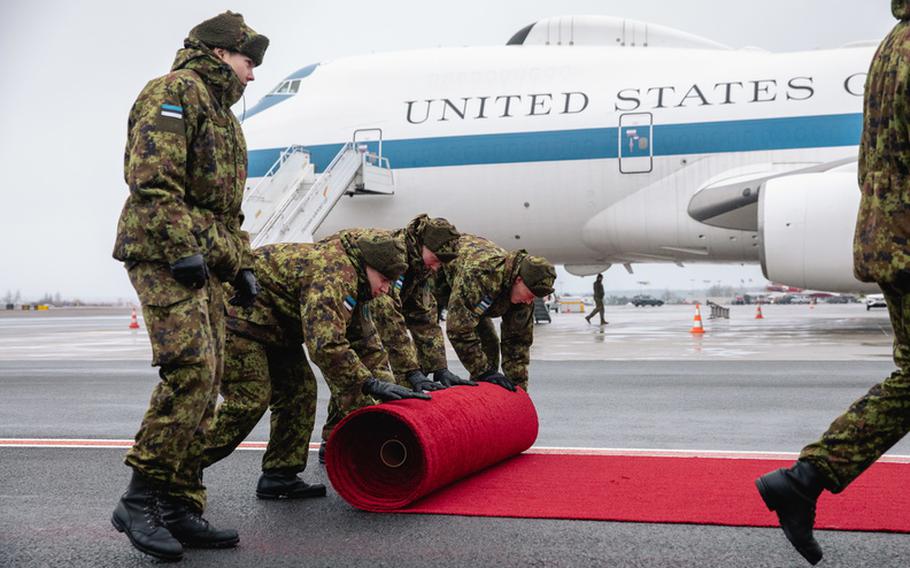
Estonia Defense Minister Hanno Pevkur and U.S. Defense Secretary Lloyd Austin review troops following Austin’s arrival in Tallinn, Estonia, for security talks on Thursday, Feb. 16, 2023. (Ardi foto)
NATO members should be required to devote significantly more of their gross domestic product to their respective military budgets, Estonia’s defense minister said Thursday following talks with U.S. Defense Secretary Lloyd Austin in Tallinn.
“Allies must spend more than 2% of their GDP on defense. Ideally, closer to 2.5%,” Hanno Pevkur said at a news conference.
The comments came one day after a meeting of NATO defense leaders in Brussels, where the issue of increasing alliance defense spending guidelines was among the top issues discussed.
Allies are expected to agree to a new investment pledge this summer when heads of state hold a summit in Vilnius, Lithuania.
In 2014, NATO set 2% of GDP on defense as a benchmark to be achieved by 2024. But now, following Russia’s unprovoked full-scale invasion of Ukraine, some alliance leaders say a more dangerous security environment necessitates larger commitments.
Raising the minimum spending requirement could run into opposition from countries such as Germany, which already falls well short of the 2% mark.

Estonian troops roll out the red carpet for U.S. Defense Secretary Lloyd Austin in Tallinn, Estonia, on Thursday, Feb. 16, 2023. Austin met his counterpart for talks ahead of a NATO heads of state summit in Lithuania this summer. (Kristjan Kostabi)
But ramping up spending and improving NATO defenses would mean having the resources to further bolster alliance support for Ukraine, Pevkur said.
“More can only be given when there is more to give,” he said.
For Estonia, which borders Russia, the outcome of the war in Ukraine is of significant concern. When asked whether his country could be next if Russia succeeds in its objectives in Ukraine, Pevkur said that “we are doing our maximum to prevent it.”
He added that to deter any potential aggression, NATO needs to update its regional defense plans for the Baltics, which he hopes will happen in July at the Vilnius summit.
For its part, the United States has stepped up military operations in Estonia and the rest of the Baltics in a move aimed at deterring potential threats, Austin said.
“Our commitment to Article 5 is ironclad,” said Austin, referring to the NATO provision that an attack on one member demands a response from all. “We take that very seriously.”